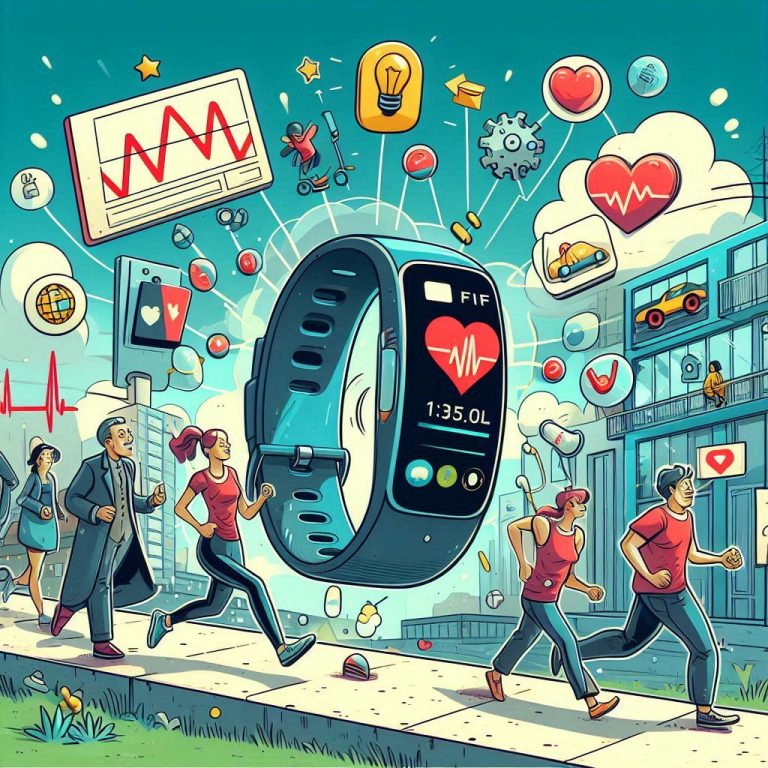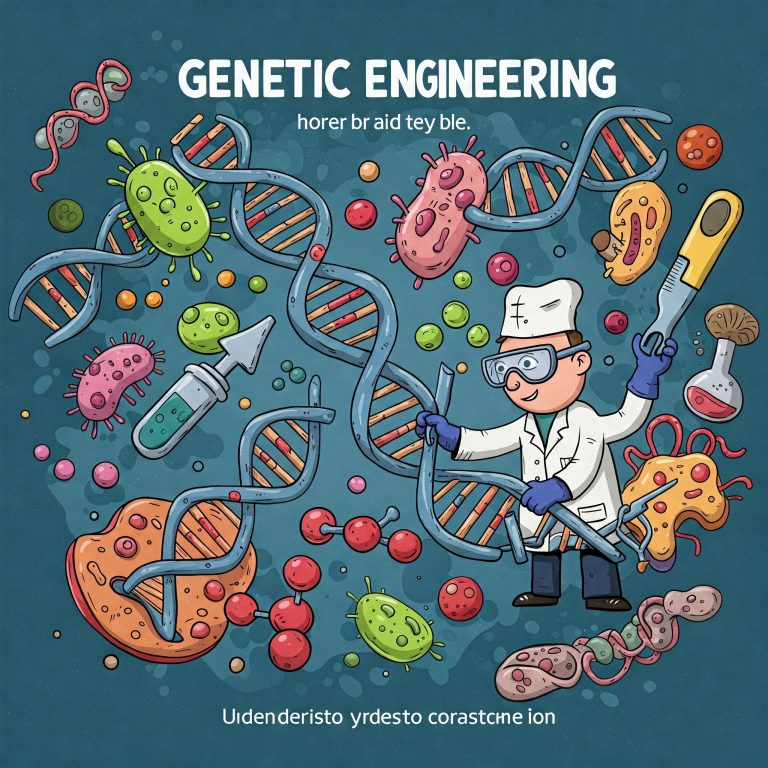
What is Biotechnology
Biotechnology is basically the field in which biology combines with technology to form innovative solutions that are uses within different industries. It ranges over a wide spread of applications; from life-saving medical treatments to genetically modified crops, environmental sustainability efforts such as bioremediation and the production of biofuel. This is an important field that tackles some of the world’s pressing challenges by taking advantage of living organisms and the power of their biological processes; it changes our lives and the planet.
Advancements in Healthcare under biotechnology
Indeed, the impact of biotechnology is manifested in health. Actually, various life-saving vaccines and also advance gene therapies have been developed through innovation in biotechnology. For example, personalized medicine would be tailored to the specific genetic profile of an individual, such as a method using CRISPR-Cas9 gene editing to enable scientists to make exact DNA changes to cure genetic disorders. Here are some key advancements:
1. Gene Therapy
Gene therapy seeks to cure or prevent diseases by adding, altering, or removing genes within an individual’s cells. Techniques such as CRISPR-Cas9 have improved the precision and efficiency of gene editing, which may one day lead to a cure for genetic diseases like cystic fibrosis and muscular dystrophy.
2. Personalized Medicine
Personalized medicine refers to the tailoring of medical treatment to a patient’s genetic profile. Once the genetic makeup of a patient is known, the doctors can provide better treatment options with fewer side effects. It is especially helpful for diseases such as cancer because the therapy could be specifically targeted.
3. Vaccines
One of the areas biotechnology has led to is vaccines, including the mRNA vaccines that recently became available to treat COVID-19. It involves using a small piece of the virus’s genetic material to trigger an immune response that offers immunity without causing the disease.
4. Biopharmaceuticals
Biopharmaceuticals are drugs developed using living organisms, such as bacteria or yeast. These include the insulin for diabetes, monoclonal antibodies for cancer, and replacement enzyme therapies for rare diseases. Biopharmaceuticals deliver targeted and efficient treatments with minimal side effects in comparison to other pharmaceutical drugs.
5. Regenerative Medicine
Regenerative medicine deals more with tissue and organ repair or replacement. Some of the techniques used to regenerate healthy tissues include stem cell therapy, tissue engineering, and 3D bioprinting. These are some of the techniques that show great promise for diseases like spinal cord injuries, heart disease, and degenerative diseases.
6. Diagnostic Tools
Advanced diagnostics could be in the form of next-generation sequencing and bioinformatics, which aids early and accurate detection of diseases. It identifies genetic mutations, infectious agents, and helps identify biomarkers to be able to intervene in disease conditions well in time and devise personal treatment plans.
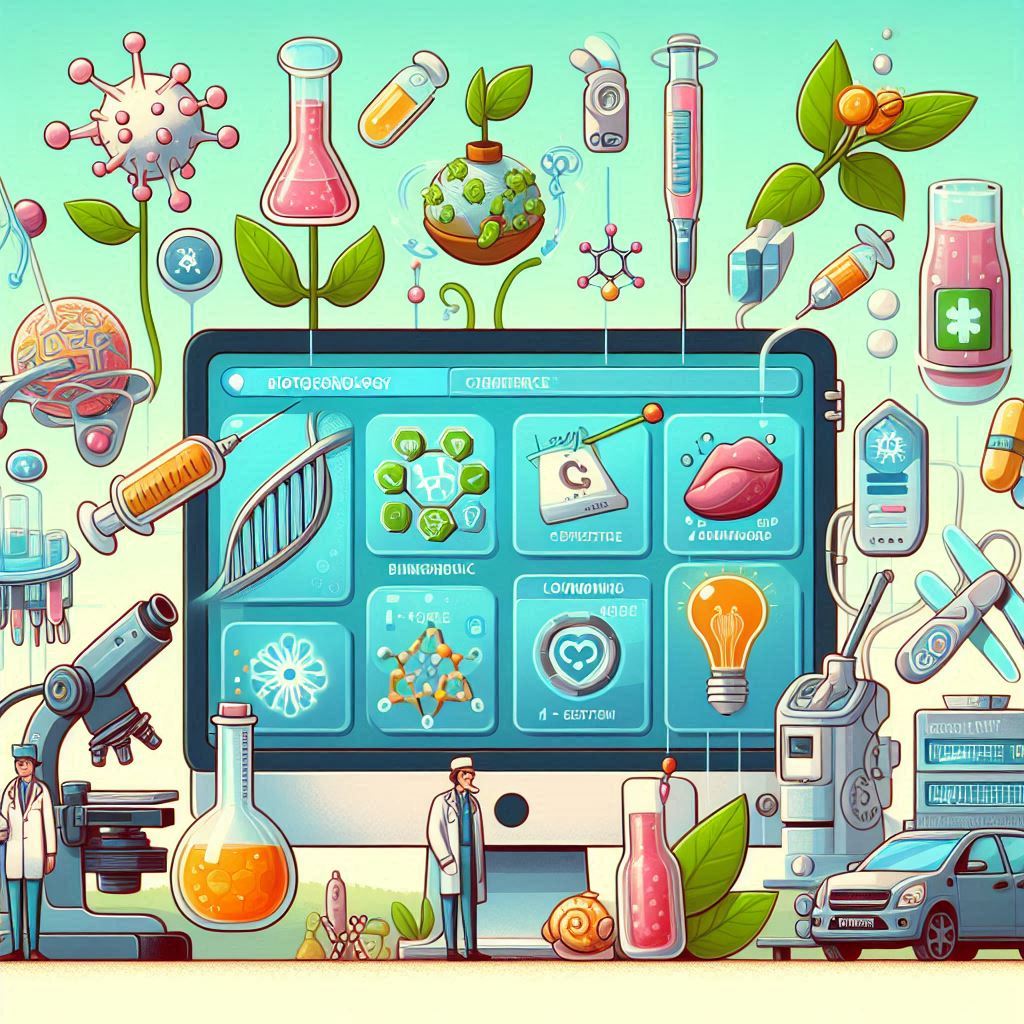
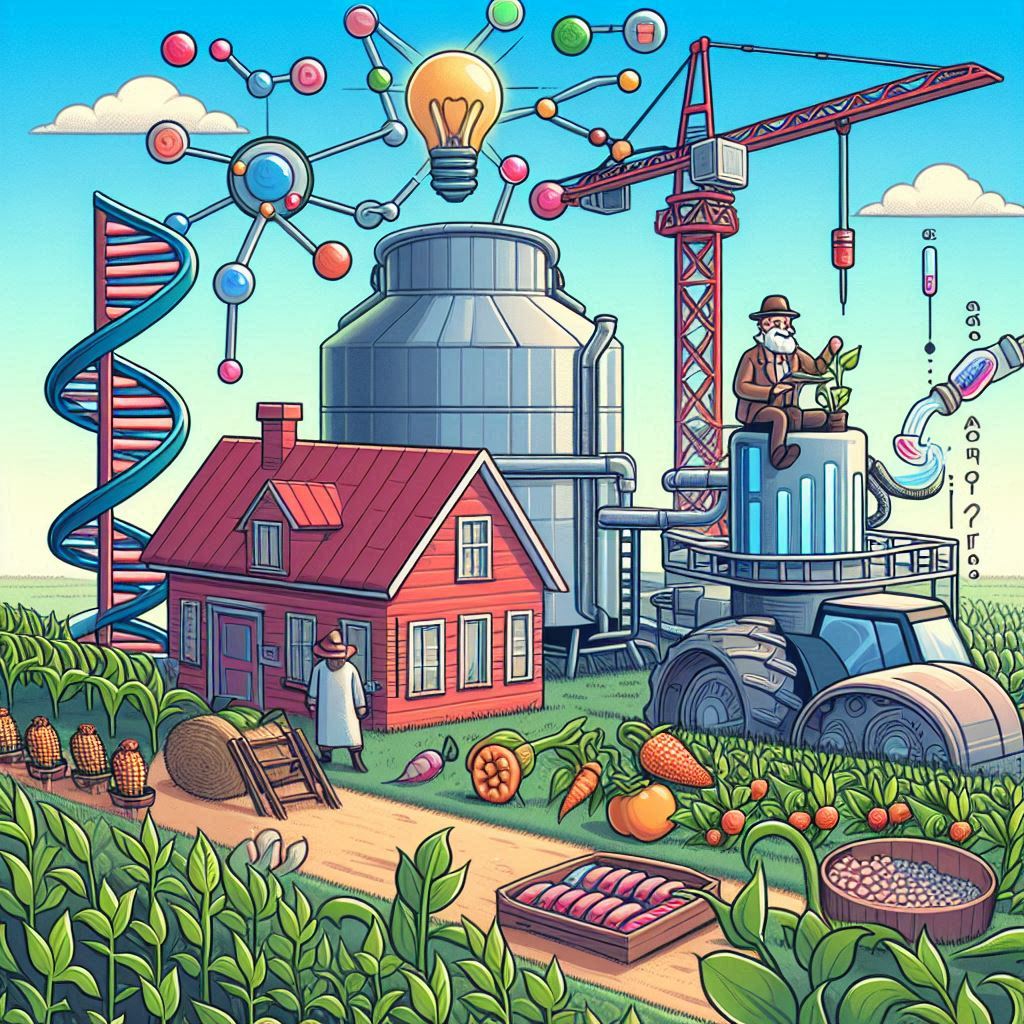
Agricultural Revolution under biotechnology
In agriculture, biotechnology has transformed the way farming is carried out. Genetically modified organisms have been engineered to bring greater crop yields, pest resistance, and tolerance of extreme weather conditions. This ensures food security while reducing reliance on chemical pesticides and fertilizers, thus promoting sustainable farming practices. Here are some key advancements:
1. Genetically Modified Organisms
GMO crops are engineered for greater production and stress tolerance, especially against certain pests, and climate stress tolerance. In this way, hardy or productive varieties of crops will be produced for food security.
2. Crop Improvement
Advanced techniques like MAS and CRISPR-Cas9 gene editing help breed crop varieties in a more precise and fast way. These techniques enhance desirable characteristics such as resistance to diseases, drought tolerance, and nutritional value for crops, making them more efficient and nutritious.
3. Pest and Disease Control
Biotechnology has led to the development of crops that produce their own pesticides, such as Bt cotton, which reduces the need for chemical pesticides. Moreover, biotechnological approaches are used to create plants that are resistant to various diseases, thus minimizing crop losses and promoting sustainable farming.
4. Soil and Plant Health
The development of biofertilizers and biopesticides by biotechnology has led to the enhancement of soil fertility and plant health through friendly microorganisms. Usage of such environmentally friendly substitutes reduces dependence on chemical fertilizers and pesticides.
5. Improved Livestock
Biotechnological advancements have further improved livestock breeding, health, and productivity. Artificial insemination, embryo transfer, and cloning improve desirable characteristics of animals, like resistance to disease and more milk or meat yield.
6. Sustainable Agriculture
Biotechnology promotes sustainable agriculture through the efficient utilization of natural resources and reduction of humanity’s negative impacts on the environment. For example, drought-resistant crops require less water, and nitrogen-fixing plants reduce the use of synthetic fertilizers.
7. Food Quality and Nutrition
Scientists have been capable of developing different crops with enhanced nutritional content through biotechnology. For example, Golden Rice, which contains vitamin A, is a biofortified crop that aids in solving deficiency and directly enhances public health for people in developing areas.
Environmental Sustainability on biotechnology
It is also being use to protect the environment. The most promising aspect of biotechnology, therefore, would be the possible use of microorganisms for bioremediation. This ability of these microorganisms to degrade pollutants in soil and water may give us a natural, efficient way of ridding our environment of contamination. Besides, biofuels made from biological materials will provide a renewable source of energy and help reduce our dependence on fossil fuels. Here are some key contributions:
1. Bioremediation
Bioremediation is the process of using microorganisms to clean up contaminated environments, such as oil spills or soil and water pollution caused by industrial activities. Microorganisms break down harmful pollutants into less harmful substances; this is an effective and natural way of recovering ecosystems.
2. Biofuels
Biotechnology is producing biofuels from renewable sources, such as plants, algae, and even waste materials. Biofuels include bioethanol and biodiesel, replacing fossil-based fuels and introducing a lower greenhouse gas contribution to the overall atmospheric concentration levels while reducing dependence on non-renewable resources.
3. Waste Management
The treatment and recycling of waste are carried out by biotechnological processes. For instance, anaerobic digestion is a process in which organic wastes are broken down into biogas through the action of microorganisms. This can serve as an energy source and decreases the amount of landfill waste, providing renewable energy.
4. Pollution Control
Biofilters and bioreactors for air and water purified by using microorganisms have been developed through biotechnology. This technology has the ability to significantly reduce pollutants like heavy metals, nitrates, and volatile organic compounds in water and in the air, improving air and water quality.
5. Sustainable Agriculture
Biotechnology fosters sustainable agriculture, where crops with low inputs, for example, pesticides and fertilizers, are designed. An example is the use of nitrogen-fixing plants to enrich the soil with nitrogen and, consequently decrease the amount of synthetic fertilizers needed. It, therefore reduces the impacts to the environment while promoting the well-being of soils.
6. Conservation of Biodiversity
Biotechnological tools are used for the conservation of biodiversity and protection of endangered species. Techniques like genetic analysis, cloning support the conservation of genetic diversity and reintroduction of threatened populations.
7. Renewable Materials
Through biotechnology, it has been possible to manufacture biodegradable plastics and other bio-based materials, thus there will be alternatives to the traditional petroleum-based products. These renewable materials help reduce plastic pollution and encourage a circular economy.
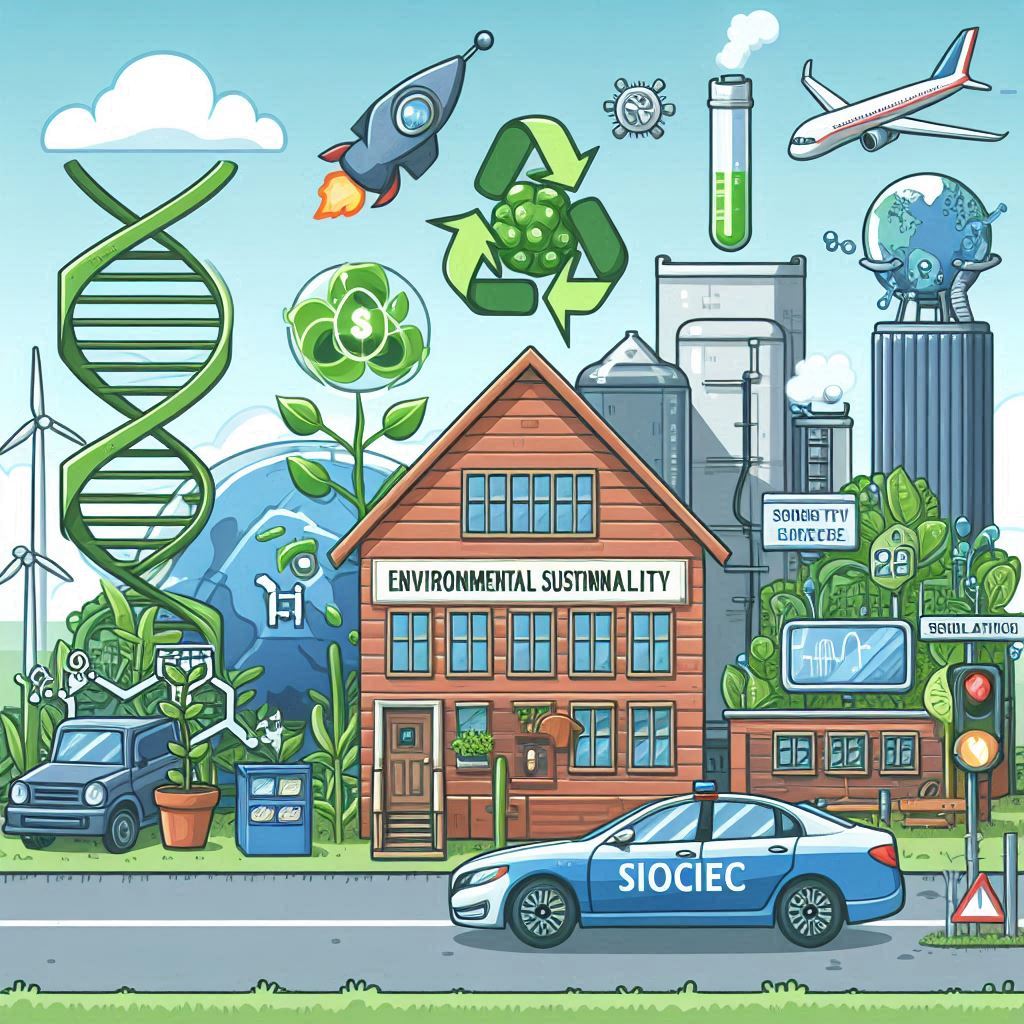

Industrial Innovations
Industrial sector biotechnology is revolutionizing the manufacturing process. Enzymes and microorganisms are used to produce bio-based chemicals, biodegradable plastics, and other sustainable products. This will have environmental impacts, but it will also be an economic benefit because of new market opportunities and job creation. Here are some key innovations:
1. Biological resources
Biological processes involve the use of living cells or cell components (such as enzymes) to produce products of industrial importance. This includes the production of biofuels. Bioplastics, pharmaceuticals, and chemicals are processed through biological processes such as fermentation. These methods are often more environmentally friendly when compared to conventional chemical processes.
2. Bioplastics
Bioplastics are derives from renewable organic sources such as corn starch, sugarcane, and cellulose. These biodegradable plastics reduce reliance on fossil fuels and reduce plastic pollution. It is a sustainable alternative to conventional plastic. 3. Biofuels Biofuels such as bioethanol and biodiesel are shape from renewable biomaterials. They are a cleaner and more sustainable alternative to fossil fuels. Reduce greenhouse gas emissions and support energy security
4. Enzyme technology
Enzymes are biological catalysts that speed up chemical reactions in industrial processes. They are use in a wide variety of applications. Including food and also beverage production Textile and paper production and biological detergent Enzyme technology improves process efficiency. Further Reduce energy consumption and reduce the use of harsh chemicals
5. Industrial biotechnology
Industrial biotechnology uses microorganisms to produce chemicals, materials, and energy. This includes using bacteria and yeast in fermentation processes to produce biological chemicals such as ethanol, lactic acid, and butanol. These biological chemicals make It functions as an equally important component for various industrial products.
The Future of Biotechnology

The future of biotechnology, therefore, is bright, with the promise of further groundbreaking discoveries from ongoing research and development. Synthetic biology-the design and construction of new biological parts-holds the promise of creating novel organisms and systems that can be programmes to perform specific functions. New drugs, sustainable materials, and even bio-computers could come out of this.
Conclusion
It is a transforming force that is changing industries and the quality of our lives. Its applications vary greatly, opening up new ways and also solutions to the current global challenges that the future needs. As we venture further into its potential, science and technology together will surely bring about a better future for all.
Subscribe to our newsletter!
